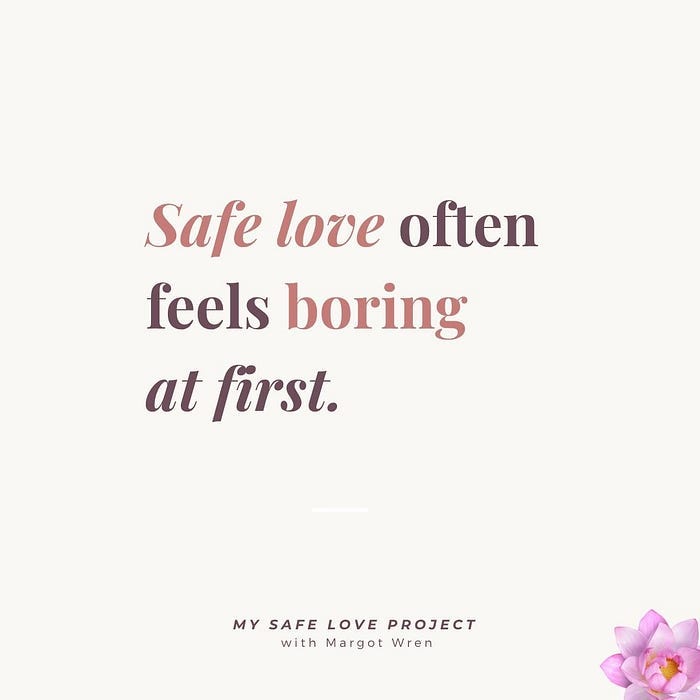10 Romantic Movies That Taught Us Unsafe Love
What our favorite films taught us about love — and why messy doesn’t mean meaningful
“We see things not as they are, but as we are.”— Anaïs Nin
Let’s be honest: who among us didn’t grow up believing that love meant longing, drama, and fireworks? That a truly epic romance required slow-motion airport chases, passionate arguments in the rain, or at least one grand gesture that bordered on public disturbance?

“We see things not as they are, but as we are.”— Anaïs Nin
Nearly every romantic movie we adored — from The Notebook to Titanic, Wuthering Heights to Pretty Woman — centered on the kind of love that involved pain, pursuit, miscommunication, and chaos. And we didn’t just watch them — we absorbed them like gospel.
They weren’t just stories. They were scripts. And for many of us, they became nervous system blueprints.
The hidden emotional map
We were taught that the more complicated a relationship was, the more powerful the love must be. That desire should be proven through suffering. That if you weren’t crying in the rain at least once, it probably wasn’t real.
For example:
Romeo and Juliet — two teenagers who knew each other for three days and ended up dead. Iconic.
Bridget Jones — changed everything about herself to win a man who didn’t text back.
Carrie Bradshaw — chased Mr. Big for six seasons and a movie — and we applauded when she got a shoe closet.
This pattern, amplified by the intermittent reinforcement of sporadic attention, wires our brains to chase the ‘high’ of potential instead of consistent safety.
The real danger isn’t just in the dramatization — it’s in the emotional map these films laid down:
Love must be high-stakes.
Love must hurt.
Love must come with a swelling soundtrack and a catastrophic miscommunication that leads to a last-minute dash through traffic. Especially if you’re wet.
For those of us with attachment wounds? This was less entertainment and more curriculum.
10 Romantic Films That Taught Us Unsafe Love
1. Wuthering Heights
Brooding obsession. Emotional violence. Cathy and Heathcliff don’t date — they haunt. And we called that romance.
2. The Notebook
Fiery arguments? Check. Identity erased in service of passion? Triple check. If it burns your whole life down, is it love — or arson?
3. Twilight
He watches you sleep. He says you’re his drug. You risk death to be with him — but hey, he sparkles. Bella didn’t need a boyfriend. She needed a therapist and a boundary workshop.
4. Titanic
He dies. She floats. We cry. But the real tragedy? We believed 48 hours of shipboard intensity justified a lifetime of mourning. (Also: there was room on that door. Just saying.)
5. 500 Days of Summer
A brilliant film — about projection. Tom didn’t love Summer. He loved the idea of her. Significant difference. Ask your therapist.
6. A Star Is Born (2018)
Addiction, codependency, and total identity loss — wrapped in a Grammy-worthy duet. It’s not romance. It’s emotional enmeshment with an Oscar nom. (But hey, the music is fabulous.)
7. Beauty and the Beast
He imprisons her. She transforms him. That’s not a fairy tale — it’s a fawn response in a ballgown. (With a singing teacup for comic relief.)
8. Jerry Maguire
“You complete me.” Romantic — if you’re missing 40% of your frontal cortex. Healthy love starts with wholeness, not a dramatic hole-in-the-heart speech.
9. The Way We Were
They’re in love. They’re also completely incompatible. We rooted for chemistry to solve everything. Oh, Hubbard! (Spoiler: it can’t. That’s just cortisol.)
10. Silver Linings Playbook
Two people with unprocessed trauma try to heal each other with dance and sarcasm. Raw and relatable — but healing requires more than twirls and tension.
A gentle unlearning
Did I forget any? Feel free to remind me.
These films shaped our fantasies, no doubt. But it’s okay to unlearn them.
You don’t have to cancel the art — you just don’t have to copy it.
You don’t need a cinematic love.
You need a safe one.
“Real love doesn’t leave you breathless. It helps you exhale.”
— My Safe Love Project
As bell hooks wisely wrote:
“Love and abuse cannot coexist.”
True, so true. And yet, Hollywood really tried (and continues to try) to make it work.
Here’s the thing. Real love — the kind that’s present, steady, and emotionally safe — rarely gets the lead role. It’s too quiet. Too uneventful. Too hard to build a third-act twist around. But it’s exactly what our nervous systems are desperate for: co-regulation, calm, and connection. Not plot twists.
So the next time you wonder why the kind, calm person feels “boring,” or why you keep craving the one who only texts you at 11:47 p.m. — pause.
Ask yourself: Is this love… or is this just what I was taught love looks like?
This Essay is Part of the “Cultural Reflections” Mini-Series — My Safe Love Project.
If this resonates, you can explore more essays on safe love, healing your patterns, and nervous system wisdom by following My Safe Love Project here on Substack or Medium — or by joining me on FB or IG.





Meanwhile, I just thought of several more movies to add. :)